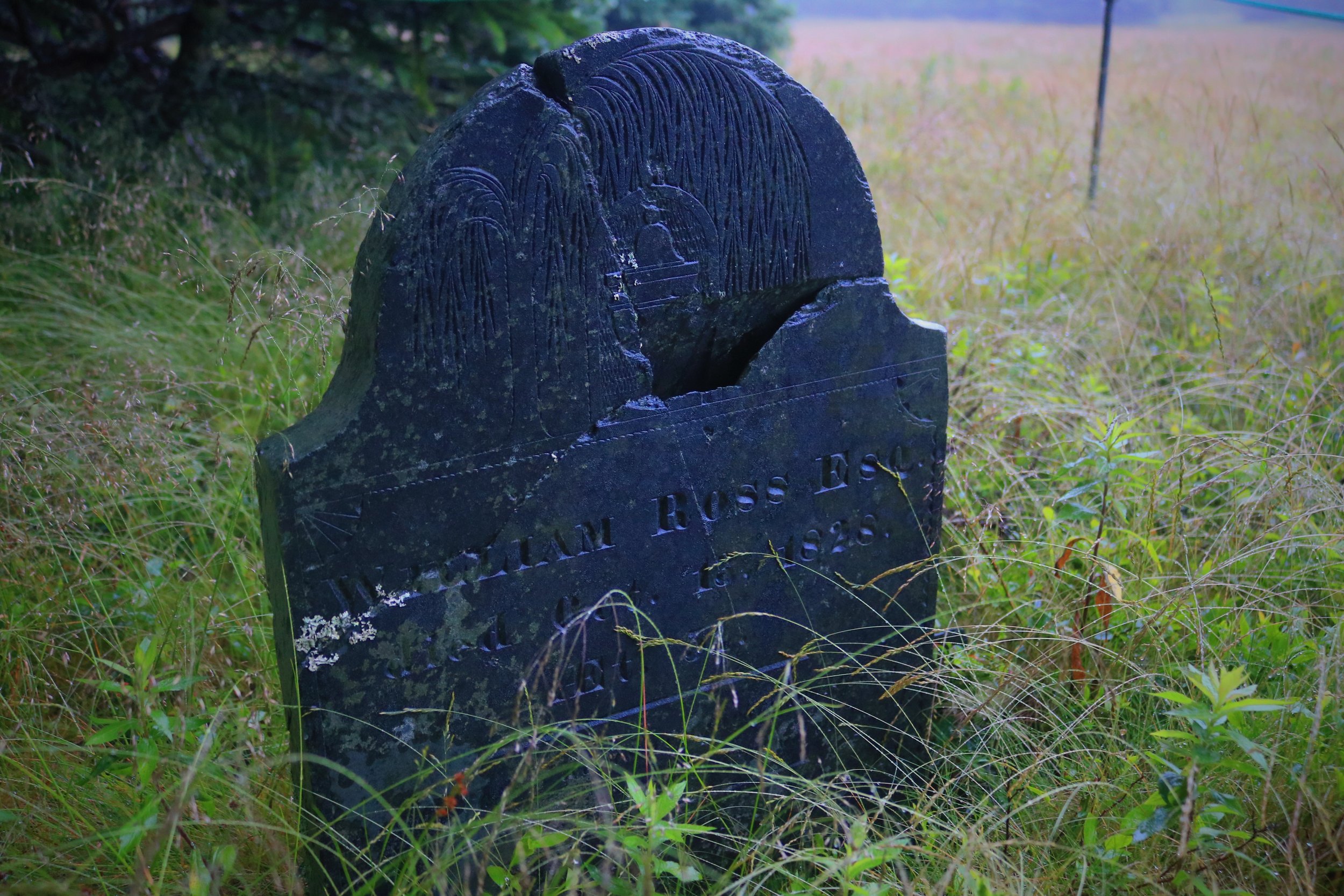Newly-opened Keiko and Errol Nature Preserve at Ross Island offers solitude, hiking, and wildlife
Newly-opened Keiko and Errol Nature Preserve at Ross Island offers solitude, hiking, and wildlife
WRITTEN BY JULIA WRIGHT, FOR THE NATURE TRUST


In the foggy July morning off the eastern shore of Grand Manan, mist drips off the tamaracks and bright-green rockweed. Gulls and cormorants wheel over the beaches and rocky shoreline of the Keiko and Errol Nature Preserve at Ross Island.
On July 6, 2024, the island officially opened as the Nature Trust of New Brunswick’s largest nature preserve – a 372.9-hectare wilderness of hiking trails, tidal marshes, wetlands, and crescent-shaped gravel beaches. Accessible by land only during low tide, the island is a key habitat for rare plant and bird species, as well as the site of the first European settlement on Grand Manan established by Capt. Thomas Ross, a Loyalist from Maine, in 1784. Today, it remains a popular destination for hiking, paddling, and birdwatching.
Its recent protected designation will ensure the next generations continue to enjoy Ross Island, said Grand Mananer Norah Davidson, one of about 50 people who attended the grand opening on July 6. From her home on Brownville Road, she “sees Ross Island every day in my life when it's not as foggy.”
“It's rough and it's unspoiled – an essential New Brunswick wilderness,” she said, fondly recalling boat excursions to the northwest corner of Ross Island to watch the herons in Chalk Cove, exploring the island’s many gravel beaches – and one “secret” sandy beach known to the locals.





Also at the grand opening was sea kayaker Walter Emrich, who first visited the island in the early stages of the Nature Trust’s acquisition process. “I just couldn't believe how big it was,” he said. “It's just an enormous island– so beautiful. It's just an amazing acquisition.”
It’s an ideal destination for kayakers looking for a safe place to paddle near the shore without wandering too far into the ocean. “It’s a long paddle all the way around the island with lots of places you could stop and pull in and take a break.”
The Nature Trust is “trying to encourage people to see it for what it is: as a special protected place,” Davidson said. “Let’s let it be the way it is, without being damaged by human interference.”
Ross Island is now the fourth Nature Trust preserve on Grand Manan, where the Meredith Houseworth Memorial Seashore Nature Preserve, the Seven Days Work Cliff Nature Preserve, and the Thomas B. Munro Memorial Shoreline Nature Preserve are also located.
Ross Island might have been a site for future development had it not been acquired by the Nature Trust. Since 1984, it had been the private property of New York businessman Errol Rainess, who purchased Ross Island sight unseen from a Maine lumber company, and his late wife Keiko Machida. In 2021, after a major $1.3 million fundraising campaign supported by the provincial and federal governments, private donors, the Maple Cross Fund, Echo Foundation and the Gosling Foundation, the Nature Trust purchased the property.




Elsewhere, said summer resident and local historian Alison Deming, sections of Grand Manan’s’ extensive trail system have had to be rerouted in recent years due to landowners cracking down on public access.
“We’re beginning to see private interest coming in with a different set of ideas about how we use this land,” Deming said. “The big fear for Ross Island was that it could've been developed, because it was privately owned. It's such a treasure. I think that would've been terribly sad.”
Since 2021, Nature Trust crews have been hard at work clearing trails, removing beach debris, and installing new trail signage – assisted by locals like whale tour operator Matt Lambert of Lambert’s Family Adventures, who regularly transported crews on and off the island.
Getting to the island on foot at low tide from Grand Harbour means a short 270-metre hike over the ocean floor punctuated by deep tidal pools, slippery seaweed, and an abundance of mussel shells and periwinkles. Merlin and other birds of prey can be spotted perching on the power lines that bisect the island, providing electricity to nearby Cheney and White Head islands.






At Chalk Cove, an unusual, bright-white rock formation topped with trees overlooks Grand Harbour. Elsewhere, evidence of early settlers is still visible in the foundations of old buildings, the ruins of the Grand Harbour lighthouse at Fish Fluke Point, and a small graveyard in a field covered in wild blueberry bushes that contains the 19th-century gravestone of William Ross, Esq.
The isolation and wildness of the Grand Manan archipelago, which includes Ross Island, are what make it a magical place, according to sustainability consultant Carl Duivenvoorden.
“The very best thing that you can do is to set aside land in perpetuity,” he said “and that's what's being done right here: the habitat remains intact for the diversity of species.”
In addition to a habitat for animals and plants, he said, islands are also places where people “can disconnect from our daily routines, and get back in touch with the world around us.”
Hiking, paddling, birdwatching, picnicking, and sightseeing are all encouraged at the Keiko and Errol Nature Preserve at Ross Island.
“I hope it becomes a place where people can learn about the natural world,” Deming said. “Grand Manan is a place where culture and nature have always been entirely interwoven: life comes from the sea here, and has been supported by the sea.
“I hope people will become more aware, through the protection of this island, of the importance of our stewardship of the natural world. “
Wild irises are common throughout the beaches and shoreline areas of the Keiko and Errol Nature Preserve. Photo by Julia Wright


